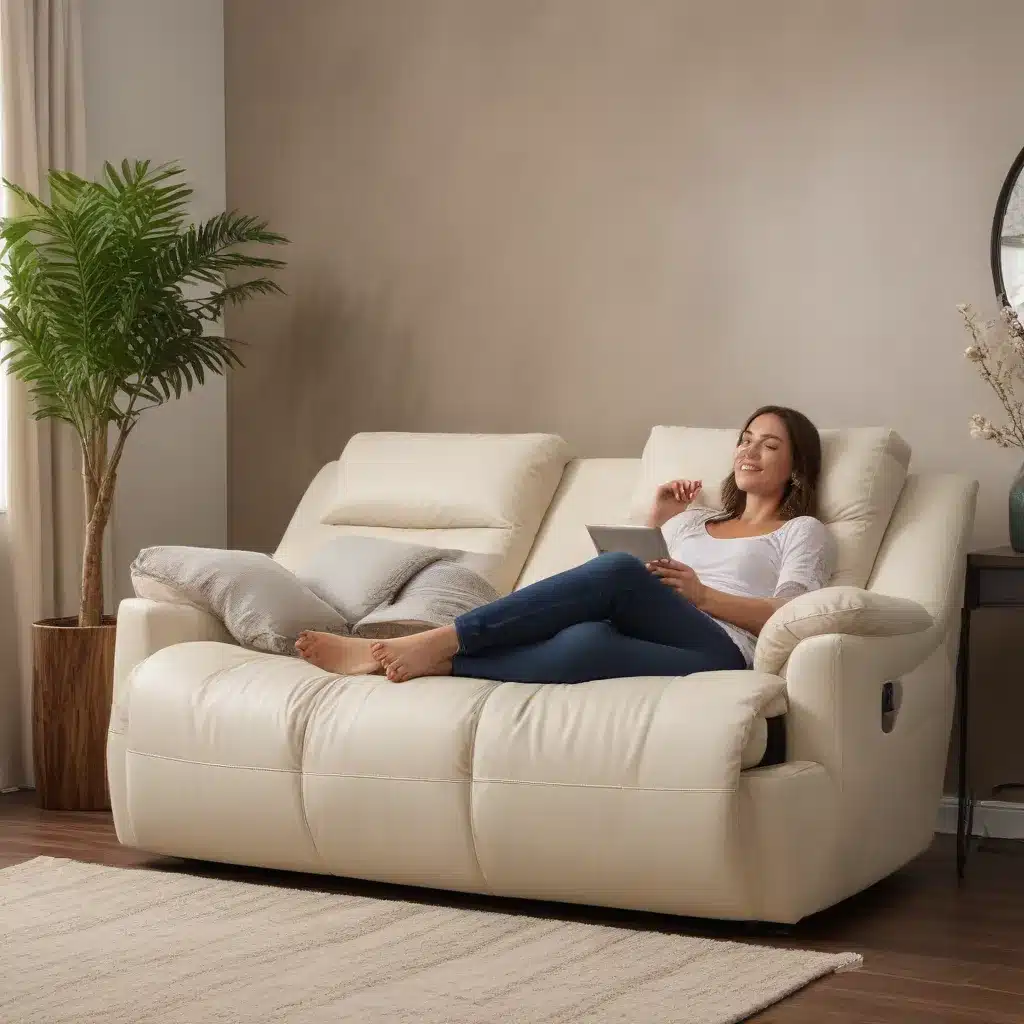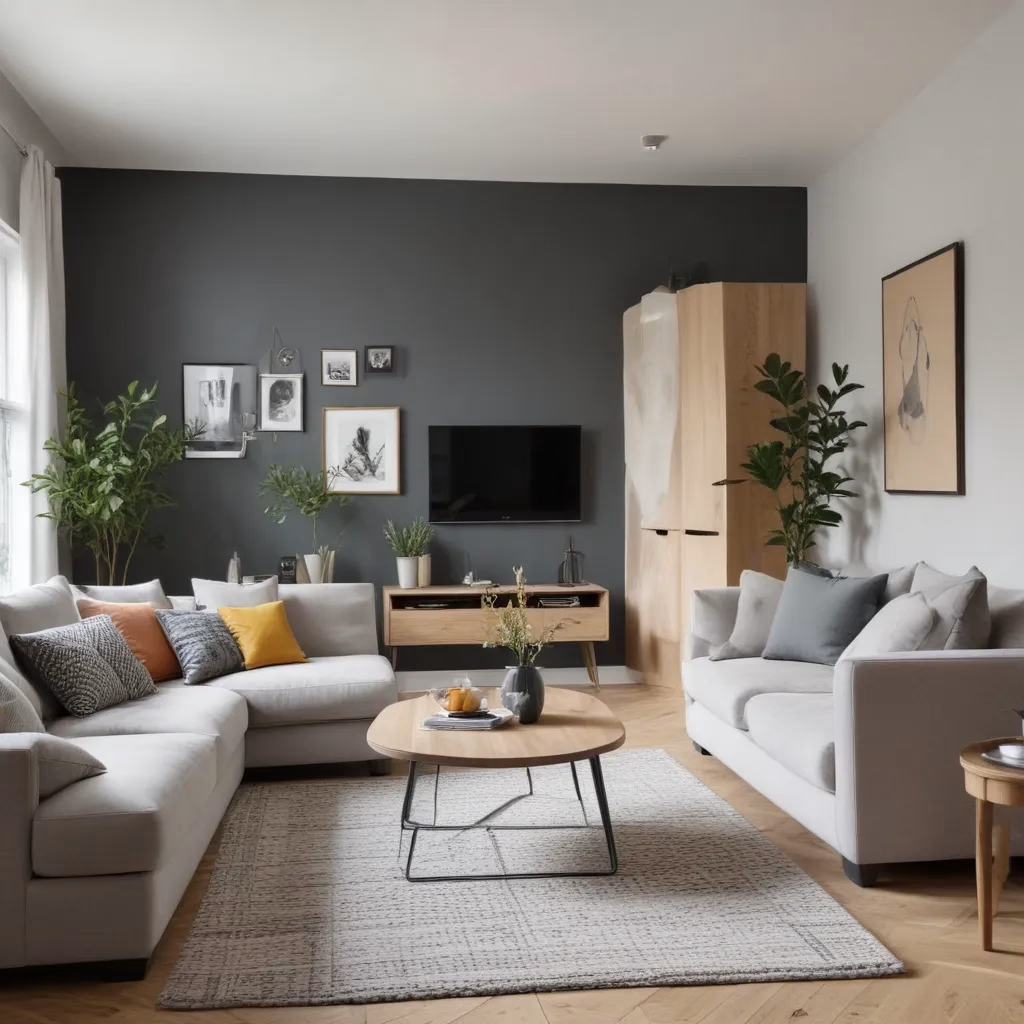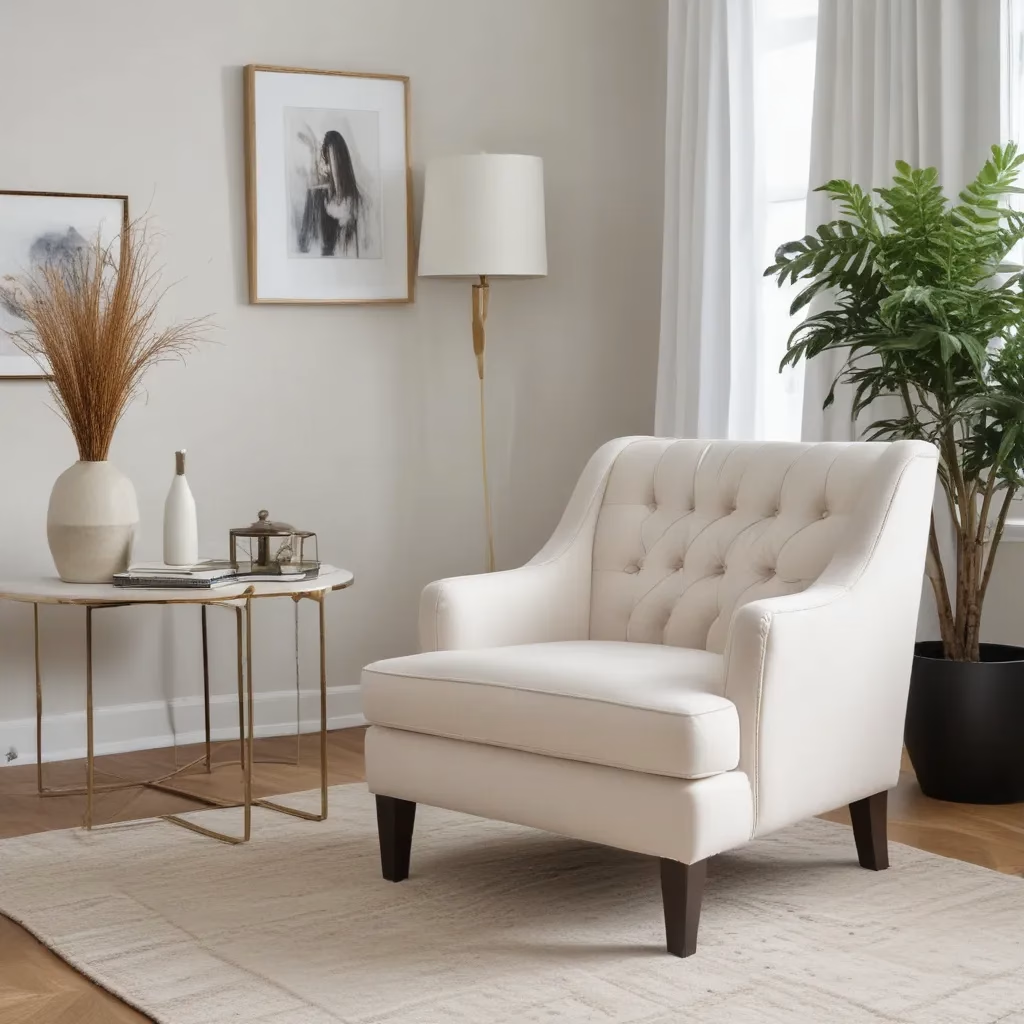
The Art of Selecting the Perfect Sofa
As a furniture specialist with years of experience, I’ve seen firsthand how a well-chosen sofa can transform a living space. It’s not just about picking a piece that looks good; it’s about finding the perfect balance of comfort, style, and functionality. Let’s dive into the nuances of sofa selection that can make all the difference in your home.
When I’m guiding clients through the selection process, I always start by considering the room’s dimensions. A sofa that’s too large can overwhelm a space, while one that’s too small might look out of place. I recommend measuring your space carefully and leaving enough room for easy movement around the furniture. Remember, you’ll want at least 18 inches of walking space around the sofa.
Another crucial factor is the sofa’s intended use. Are you looking for a formal piece for a rarely-used living room, or do you need a durable option for a family room that sees daily use? Your lifestyle should dictate your choice. For instance, if you have pets or young children, I often suggest opting for performance fabrics that resist stains and wear.
Comfort is king when it comes to sofas. I always encourage my clients to test-sit before making a decision. Pay attention to the seat depth and height. A seat depth of around 21 inches is often ideal for most people, allowing you to sit comfortably with your feet on the floor and your back supported. The seat height, typically around 20 inches, should allow your feet to rest flat on the floor when seated.
Upholstery Care: Maintaining Your Sofa’s Beauty
Once you’ve selected the perfect sofa, maintaining its appearance and comfort is key to ensuring it remains a cherished part of your home for years to come. As someone who’s seen countless sofas over the years, I can tell you that proper care makes a world of difference.
First and foremost, regular vacuuming is essential. I recommend using a soft brush attachment to gently remove dust and debris from both the cushions and the frame. This simple step, performed weekly, can prevent dirt from becoming embedded in the fabric.
For leather sofas, I’ve found that a gentle wipe-down with a slightly damp cloth every few weeks helps maintain the material’s natural oils and prevents cracking. However, be cautious not to oversaturate the leather, as this can lead to damage.
When it comes to fabric upholstery, dealing with spills promptly is crucial. I always advise blotting – never rubbing – spills immediately with a clean, white cloth. For tougher stains, a mixture of mild soap and warm water often does the trick, but always test any cleaning solution on an inconspicuous area first.
Innovative Sofa Technologies Changing the Game
In my years in the furniture industry, I’ve witnessed remarkable advancements in sofa technology that have revolutionized comfort and functionality. One such innovation is the integration of adjustable components that allow users to customize their seating experience.
For example, I recently came across a sofa that features a patented spring system. This technology, comprising a ribbon of steel, provides exceptional comfort and durability. What’s particularly impressive is that this spring system never needs replacing, ensuring long-lasting support for the life of the sofa.
Another exciting development I’ve seen is the incorporation of smart features into sofas. Some models now come with built-in USB charging ports, allowing you to conveniently power your devices while relaxing. Others feature adjustable headrests and lumbar support, enabling you to find the perfect position for reading, watching TV, or simply lounging.
Designing Your Living Space Around Your Sofa
As a furniture specialist, I often emphasize that a sofa isn’t just a standalone piece – it’s the centerpiece around which the entire living room revolves. When helping clients design their spaces, I always start with the sofa as the focal point.
One approach I frequently recommend is creating a conversation area. Position your sofa facing a pair of armchairs or a loveseat, with a coffee table in the center. This arrangement encourages interaction and creates a welcoming atmosphere for both family time and entertaining guests.
Color coordination is another crucial aspect of integrating your sofa into your overall design scheme. If you’ve chosen a neutral-colored sofa, consider adding pops of color through throw pillows, area rugs, or artwork. Conversely, if your sofa is a bold hue, balance it with more subdued tones in the surrounding decor.
Don’t forget about lighting! I always suggest incorporating a mix of ambient, task, and accent lighting to create a warm and inviting atmosphere. A floor lamp beside the sofa can provide perfect reading light, while table lamps on side tables add a cozy glow.
The Impact of Sofa Placement on Room Flow
Over the years, I’ve learned that the way a sofa is positioned can dramatically affect the flow and functionality of a room. It’s not just about where it fits; it’s about how it interacts with the space and other furniture pieces.
In larger rooms, I often recommend floating the sofa away from the walls. This creates a more intimate seating area and can help define zones in an open-plan space. For example, positioning a sofa with its back to a dining area can visually separate the living and dining spaces without the need for physical barriers.
For smaller rooms, I usually suggest placing the sofa against a wall to maximize floor space. However, be mindful of traffic flow – ensure there’s a clear path through the room, typically at least 30 inches wide.
Consider the room’s focal point when placing your sofa. This could be a fireplace, a large window with a view, or a media center. Orienting the sofa towards this feature creates a natural and purposeful layout.
Sofa Trends: What’s Hot in the World of Seating
As someone who keeps a close eye on furniture trends, I’ve noticed some exciting developments in sofa design over the past few years. One trend that’s gained significant traction is modular sofas. These versatile pieces allow for easy reconfiguration, perfect for adapting to changing needs or different social situations.
Another trend I’m seeing more of is the return of curved sofas. These elegant pieces add a softness to rooms often dominated by straight lines and right angles. They’re particularly effective in creating intimate conversation areas in larger spaces.
Sustainability is also becoming increasingly important in sofa design. Many manufacturers are now using eco-friendly materials, such as recycled fabrics and responsibly sourced wood. As a specialist, I’m thrilled to see this shift towards more environmentally conscious furniture production.
Sofa Accessories: Enhancing Comfort and Style
In my experience, the right accessories can take a sofa from good to great. Throw pillows are an easy way to add color, texture, and comfort to your seating. I often suggest mixing and matching different sizes, shapes, and patterns for a curated look.
Throws are another accessory I frequently recommend. Not only do they add a cozy touch, but they’re also practical for chilly evenings. Choose materials that complement your sofa’s upholstery – a chunky knit throw can add wonderful texture to a smooth leather sofa, for instance.
Don’t overlook the importance of side tables. They provide a convenient surface for drinks, books, or decor items. When selecting side tables, consider both function and style. I often advise clients to choose tables that are about the same height as the sofa’s arms for a cohesive look.
The Role of Sofas in Different Room Types
Throughout my career, I’ve helped clients select sofas for various room types, each with its own unique considerations. In living rooms, the sofa is typically the star of the show. Here, I often recommend larger, more substantial pieces that can anchor the space and provide ample seating for family and guests.
For home offices that double as guest rooms, I’ve found that sleeper sofas can be a game-changer. Modern designs have come a long way in terms of comfort and style, offering a practical solution without compromising on aesthetics.
In bedrooms, a small sofa or loveseat can create a cozy reading nook or provide a spot for putting on shoes. When selecting a sofa for a bedroom, I usually suggest opting for a more compact design that won’t overwhelm the space.
Understanding Sofa Construction for Longevity
As a furniture specialist, I can’t stress enough the importance of understanding sofa construction when making a purchase. The internal framework of a sofa is crucial to its longevity and comfort, yet it’s often overlooked by consumers.
A high-quality sofa typically features a hardwood frame, preferably kiln-dried to prevent warping over time. I always advise my clients to look for sofas with corner-blocked, glued, and screwed joints for maximum stability.
The suspension system is another critical component. While there are various types, I’ve found that eight-way hand-tied springs offer superior comfort and durability. This method involves tying each spring to the adjacent springs in eight directions, creating a supportive and flexible seating surface.
Cushion fill is also a key factor in a sofa’s comfort and longevity. High-resilience foam wrapped in down or polyester fiber is a popular choice that offers a good balance of support and softness. For those seeking a more eco-friendly option, I often recommend cushions filled with natural latex or soy-based foam.
Caring for Different Sofa Materials
In my years as a furniture specialist, I’ve encountered sofas made from a wide range of materials, each requiring specific care. Let’s explore some common materials and their maintenance needs.
For leather sofas, regular dusting with a soft, dry cloth is essential. I recommend using a leather conditioner every 6-12 months to keep the material supple and prevent cracking. Always clean spills immediately with a slightly damp cloth, and avoid using harsh chemicals or excessive water.
Fabric sofas require different care depending on the specific material. For most fabrics, vacuuming regularly with a soft brush attachment helps prevent dirt buildup. For water-based spills on fabric upholstery, blot (don’t rub) with a clean, white cloth. For oil-based stains, I suggest using a dry-cleaning solvent, but always test in an inconspicuous area first.
Microfiber sofas are known for their durability, but they can be tricky to clean. I’ve found that a solution of mild soap and warm water, applied with a soft cloth, works well for most stains. After cleaning, use a soft brush to restore the nap of the fabric.
The Psychology of Sofa Colors
As a furniture specialist, I’ve observed how the color of a sofa can significantly impact the mood and atmosphere of a room. When advising clients on color selection, I always consider the psychological effects of different hues.
Neutral colors like beige, gray, and white are popular choices for sofas because they create a calm, versatile backdrop. These colors can make a room feel more spacious and allow for easy accessorizing with bolder accent pieces.
Blue sofas can bring a sense of tranquility and depth to a space. I often recommend blue for bedrooms or studies where a calming atmosphere is desired. Green sofas, on the other hand, can evoke feelings of nature and renewal, making them great choices for rooms that overlook gardens or natural settings.
For those looking to make a bold statement, red or orange sofas can add energy and warmth to a room. However, I caution clients to use these strong colors judiciously, as they can be overwhelming in large doses.
Sofa Styles Through the Ages
Throughout my career, I’ve developed a deep appreciation for the evolution of sofa styles over time. Understanding these historical trends can provide valuable context when selecting a sofa for your home.
The Chesterfield sofa, with its distinctive deep-buttoned upholstery and rolled arms, originated in the 18th century and remains a classic choice for traditional and contemporary interiors alike. I often recommend this style to clients looking for a timeless piece with a touch of sophistication.
Mid-century modern sofas, characterized by their clean lines and minimalist aesthetic, gained popularity in the 1950s and 60s. These pieces continue to be sought after for their ability to blend seamlessly with various decor styles.
In recent years, I’ve seen a resurgence of interest in Art Deco-inspired sofas. These pieces often feature curved lines, luxurious fabrics, and metallic accents, adding a touch of glamour to any space.
Understanding these historical styles can help you choose a sofa that not only meets your practical needs but also reflects your personal taste and complements your home’s overall aesthetic.
Making the Most of Small Spaces with Clever Sofa Solutions
In my experience as a furniture specialist, I’ve encountered many clients struggling to furnish small living spaces effectively. Fortunately, there are numerous clever sofa solutions that can maximize both style and functionality in compact areas.
One option I often recommend is a loveseat. These smaller sofas, typically seating two people comfortably, can provide ample seating without overwhelming a small room. They’re particularly effective when paired with a complementary armchair to create a cozy seating arrangement.
Another solution I’ve found particularly useful is the sectional sofa. While traditionally associated with larger spaces, many manufacturers now offer compact sectionals designed specifically for small rooms. These pieces can be configured to fit into tight corners or awkward layouts, making the most of every inch of space.
For those living in studio apartments or multi-purpose rooms, I often suggest considering a daybed. These versatile pieces can serve as a sofa during the day and transform into a bed at night, perfect for accommodating overnight guests in limited space.
The Future of Sofa Design: What’s on the Horizon?
As someone who’s been in the furniture industry for many years, I’m always excited to see new innovations in sofa design. Looking ahead, I anticipate several trends that will shape the future of these essential pieces of furniture.
One area of development I’m particularly interested in is the integration of technology into sofas. While we’ve already seen the introduction of features like built-in charging ports, I expect future designs to incorporate even more advanced tech. This could include things like embedded speakers for immersive sound experiences or smart fabrics that can change color or pattern at the touch of a button.
Sustainability is another factor that I believe will play a significant role in future sofa design. As consumers become more environmentally conscious, I expect to see an increase in sofas made from recycled or biodegradable materials. Some manufacturers are already experimenting with innovative eco-friendly fabrics and fillings, and I anticipate this trend will only grow stronger.
Adaptability is also likely to be a key feature of future sofas. With many people living in smaller, multi-purpose spaces, I foresee a rise in modular designs that can be easily reconfigured to suit different needs. Imagine a sofa that could transform from a standard three-seater into a dining booth or a workspace with just a few simple adjustments.
As we look to the future of sofa design, it’s clear that comfort, style, and functionality will continue to be paramount. However, the ways in which these elements are achieved are likely to evolve in exciting and innovative ways. As a furniture specialist, I’m thrilled to be part of this ongoing evolution and to help my clients navigate these new possibilities.
For more information on current sofa trends and expert advice on selecting the perfect piece for your home, be sure to check out Sofa Spectacular. Their range of high-quality sofas and expert guidance can help you find the ideal seating solution for your unique needs and style preferences.



